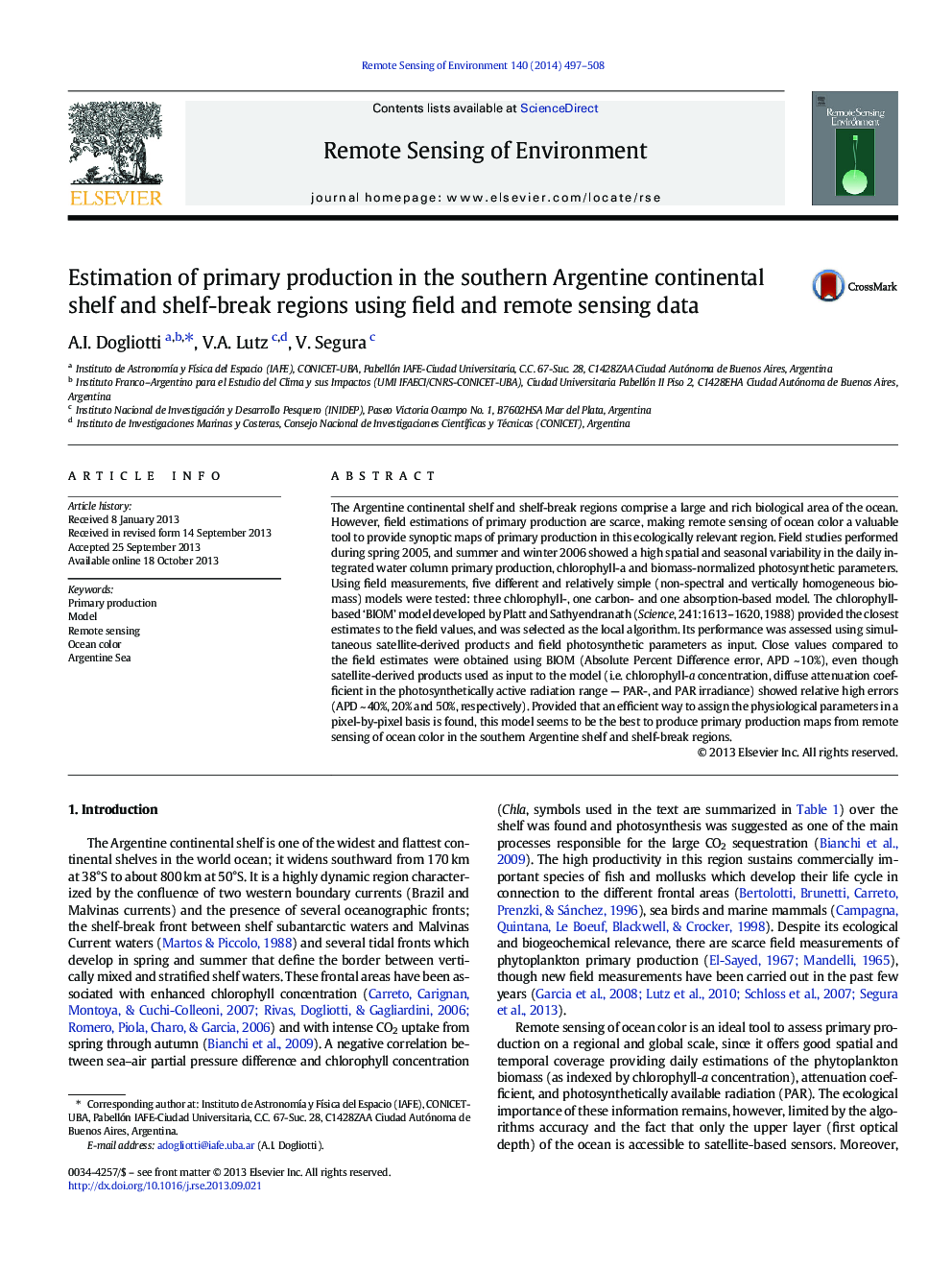| Article ID | Journal | Published Year | Pages | File Type |
|---|---|---|---|---|
| 6347046 | Remote Sensing of Environment | 2014 | 12 Pages |
Abstract
The Argentine continental shelf and shelf-break regions comprise a large and rich biological area of the ocean. However, field estimations of primary production are scarce, making remote sensing of ocean color a valuable tool to provide synoptic maps of primary production in this ecologically relevant region. Field studies performed during spring 2005, and summer and winter 2006 showed a high spatial and seasonal variability in the daily integrated water column primary production, chlorophyll-a and biomass-normalized photosynthetic parameters. Using field measurements, five different and relatively simple (non-spectral and vertically homogeneous biomass) models were tested: three chlorophyll-, one carbon- and one absorption-based model. The chlorophyll-based 'BIOM' model developed by Platt and Sathyendranath (Science, 241:1613-1620, 1988) provided the closest estimates to the field values, and was selected as the local algorithm. Its performance was assessed using simultaneous satellite-derived products and field photosynthetic parameters as input. Close values compared to the field estimates were obtained using BIOM (Absolute Percent Difference error, APD ~Â 10%), even though satellite-derived products used as input to the model (i.e. chlorophyll-a concentration, diffuse attenuation coefficient in the photosynthetically active radiation range - PAR-, and PAR irradiance) showed relative high errors (APD ~Â 40%, 20% and 50%, respectively). Provided that an efficient way to assign the physiological parameters in a pixel-by-pixel basis is found, this model seems to be the best to produce primary production maps from remote sensing of ocean color in the southern Argentine shelf and shelf-break regions.
Related Topics
Physical Sciences and Engineering
Earth and Planetary Sciences
Computers in Earth Sciences
Authors
A.I. Dogliotti, V.A. Lutz, V. Segura,
